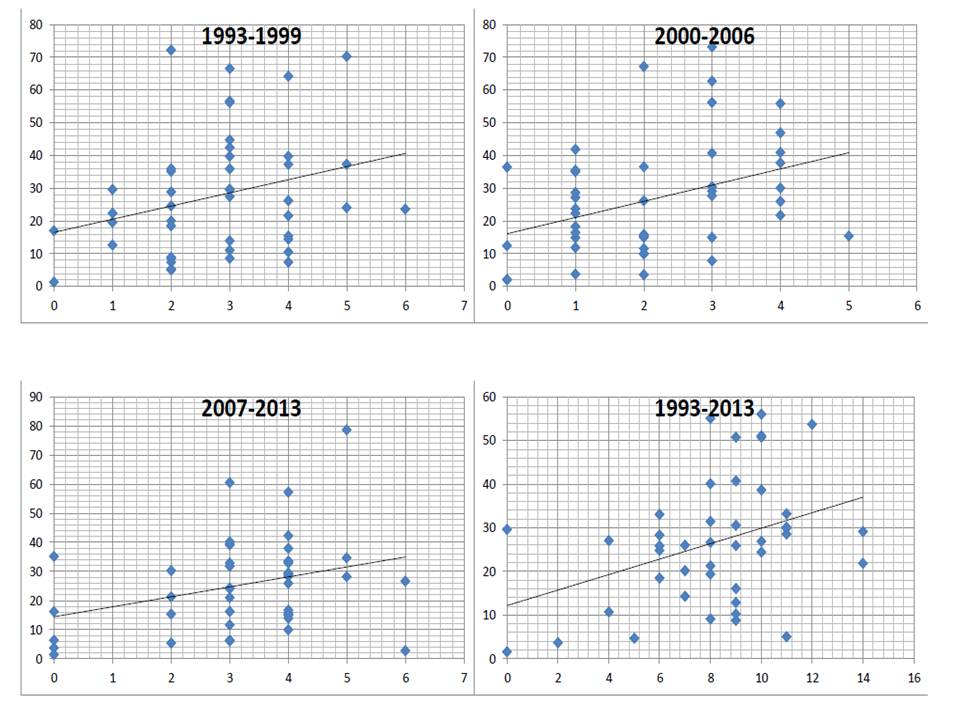
teams that changed their manager within-season are found to under-perform over the following 3 months. Managerial change also increases the variance of the non-systematic component of performance in the short term. The high incidence of within-season managerial change in English football may be a consequence of team owners gambling that an increased variance may help produce an improvement in performance sufficient to stave off the threat of relegation.
The data is broken into 3 equal periods of seven years. This means along the horizontal axis the number of seasons in the relevant period that a club changed manager (at least once). The vertical axis is the average league position for the number of seasons in the relevant period.
The graphs show a negative relationship between average league position and rate of managerial change over prolonged periods of time.
The data is collected as a control while testing other determinants of league performance. It is not possible here to address causation. Do poor-performing clubs change managers a lot or do clubs that change managers a lot under perform? There is little comfort here though for team owners gambling that an increased churn in manager provides sustainable improvement in performance.

 RSS Feed
RSS Feed